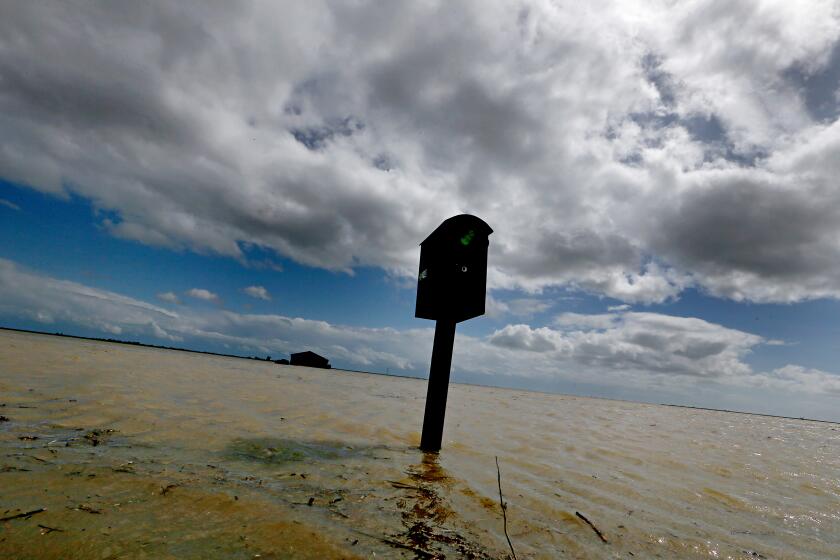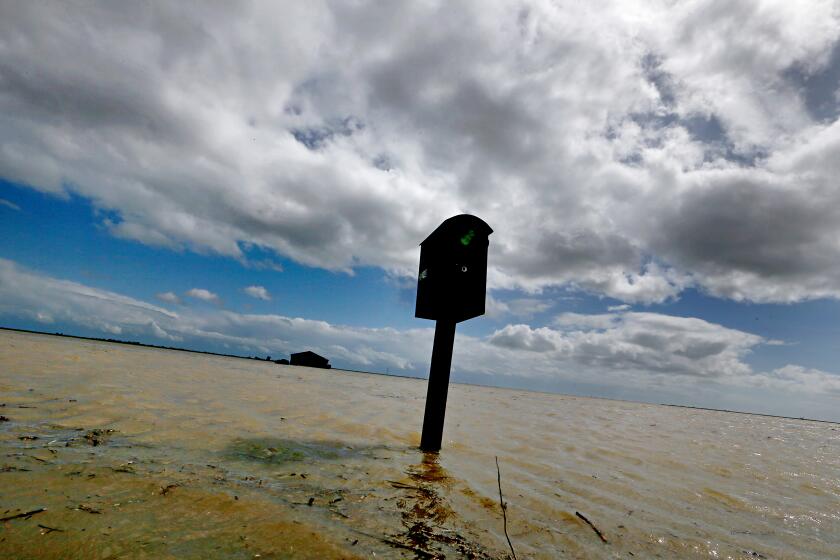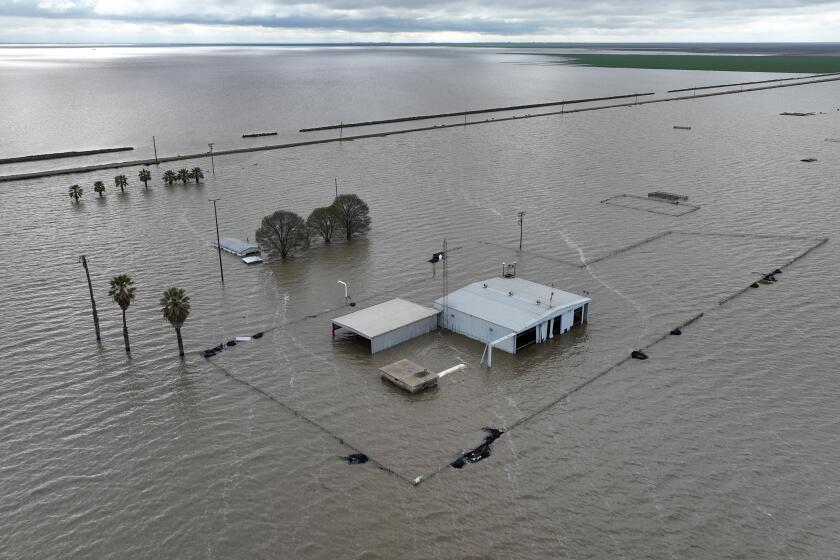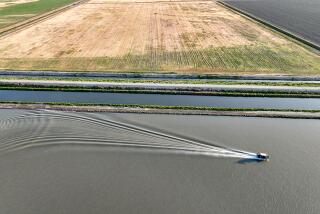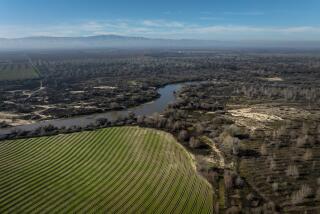Opinion: We’ve seen the flooding in California. Will we move to higher ground?
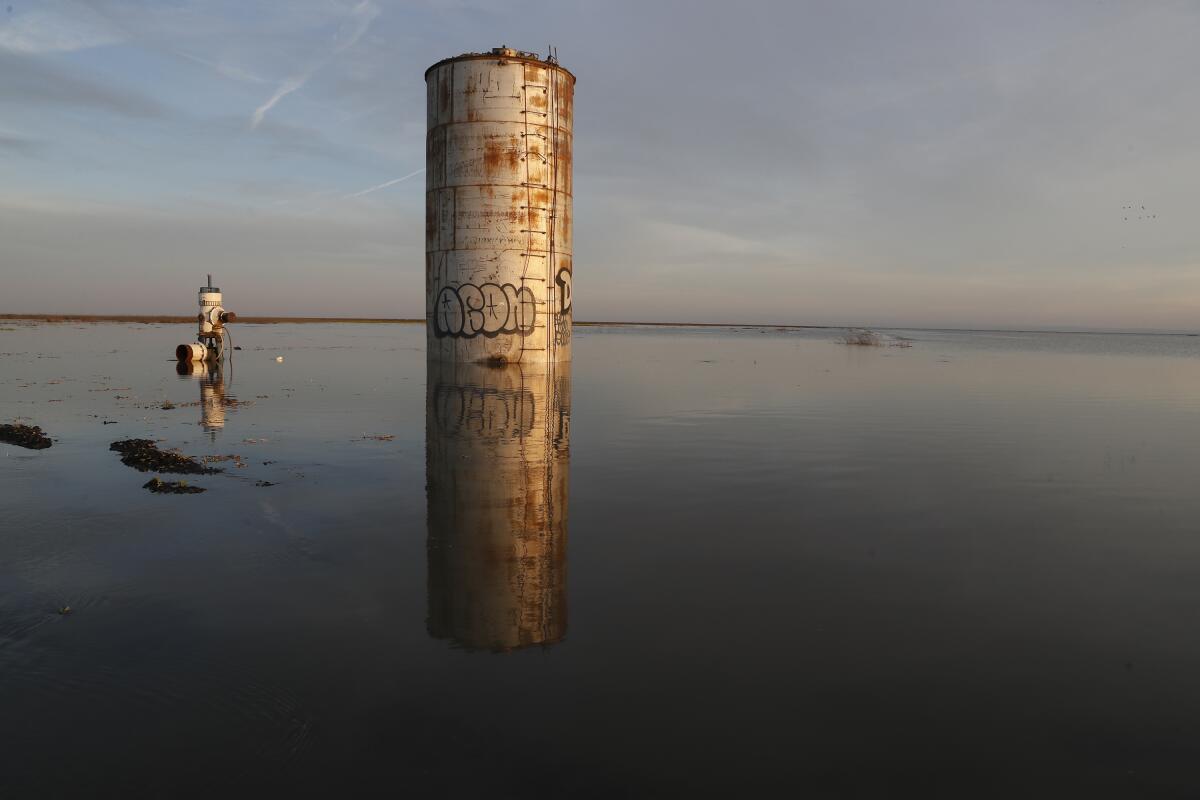
The slow-motion rebirth of Tulare Lake has inundated farm fields and threatened levees, homes and whole towns. On Monday, the state projected the lake would reach its peak in the next week or so, but the floodwaters will linger for perhaps two years.
The return of what used to be the largest lake west of the Mississippi has captured our attention as one of the most dramatic climatic events of 2023. Yet the flooded crops and tenuous levees at Tulare Lake represent only a fraction of the statewide and nationwide landscape now subject to greater floods of the global warming era.
As historic storms fill once-dry Tulare Lake and submerge prime California farmland, tensions are building over how to handle the swiftly rising floodwaters.
Seven percent of America is flood-prone and will face the risks and challenges of sharply intensifying flooding in the future. For each 1 degree Fahrenheit rise of temperature, the atmosphere holds 4% more water — every drop someday returning to Earth. And the consequences are severe. In 2022, National Oceanic and Atmospheric Administration data showed that many rainstorms already deliver 30% more water than those of the 1960s. The National Center for Atmospheric Research warns that the number of extreme rainstorms could increase 400% by 2100, delivering 70% more water in many places.
The failure to effectively address this reality is an important part of the backstory of Tulare Lake’s reemergence. The nation’s flood-control dams and levees, built at a cost of megabillions, are aging. The system will not contain the largest, most hazardous floods we can foresee.
Look no further than the close call at Oroville Dam in 2017, when inadequate spillways and an almost overflowing reservoir forced the temporary evacuation of nearly 190,000 residents. Just weeks ago, levees turned to mud along the Pajaro River in Monterey County, flooding homes and businesses in communities that could least afford it.
Although the 93% of America’s landscape that does not flood is certainly not all prime for development, a lot of it is more suitable for settlement than the lowlands where we’re constantly reenacting a tired and doomed drill. Flood, suffer, recover. Here’s how bad it can get: In Houston, one home initially valued at $114,000 was the subject of 16 federal flood insurance claims in six years, and its owners collected $806,000 to rebuild again and again. Our operative approach to floods might best be described in one word: denial.
The ‘phantom’ Tulare Lake returns
Meanwhile the cheapest, least painful means of avoiding flood damage is simply to build on higher ground and to move away from the hazards. In Nashville; Charlotte, N.C., and Tulsa, Okla., city and county governments have successfully enacted effective floodplain zoning, relocating homes and converting waterfronts to public open space. In California, Napa’s flood protection program, begun in the late 1990s, provides a fine example.
Yet the places where we’ve begun to reclaim floodplains for rivers are vastly outnumbered by the problem areas that remain and those we continue to create. It’s like trying to mop up the floor of an overflowing bathtub without first turning off the spigot. Consider this data point: The Natural Resources Defense Council has calculated that for every $100 the Federal Emergency Management Agency spends helping people rebuild where floods recur, it spends only $1.72 helping people relocate beyond the reach of high water.
Relocation of development away from floodplains needs to be funded at least to the extent that we spend money maintaining dams, rebuilding failed levees, investing in dubious efforts to “flood-proof” buildings and paying for relief when people predictably get soaked.
Tulare Lake, once the largest freshwater lake west of the Mississippi, was last full in 1878. Recent storms have flooded thousands of acres of farmland in the area.
Of course, whole flood-prone cities, such as Sacramento and Stockton, will not be relocated. But 90% of the nation’s floodplains are not part of densely developed urban areas. We know almost exactly where the floods of the future will occur. It’s not too late to prevent more building there, or too expensive to move many of the homes and businesses in harm’s way. Government programs encourage these approaches, but the investments have to be robust enough to compete with countervailing incentives.
The “phantom lake” that refilled the Tulare Basin this winter holds us rapt. It should also remind us of what’s at stake in the decades to come in California and the nation, and of what must change if we’re to adapt rather than suffer and pay for the costs of flooding over and over again. It only makes sense to get out of the way of severe losses we know are inevitable.
Tim Palmer is the author of more than 30 books on rivers, conservation and the environment. His latest, “Seek Higher Ground: The Natural Solution to Our Urgent Flooding Crisis,” will be published in 2024.
More to Read
A cure for the common opinion
Get thought-provoking perspectives with our weekly newsletter.
You may occasionally receive promotional content from the Los Angeles Times.
